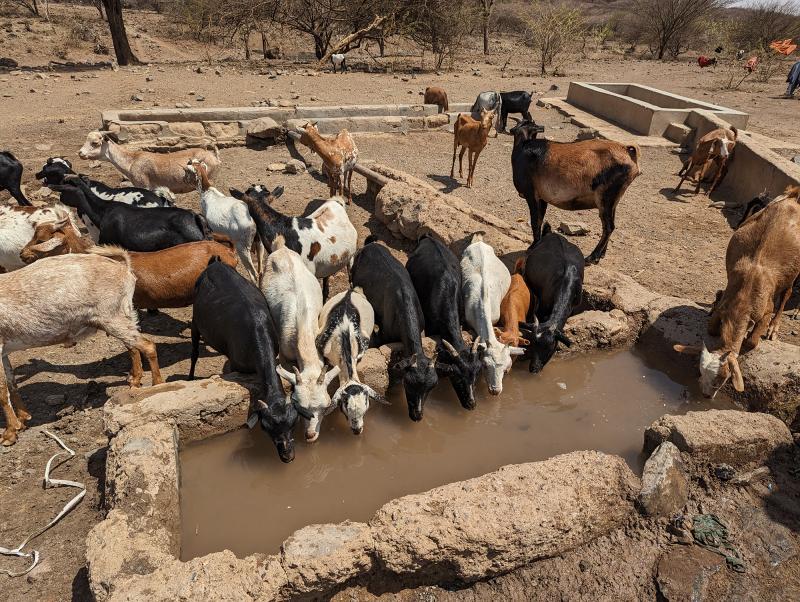Does resilience-building last when projects end? Retrospective lessons from projects to support pastoralists in Turkana, Kenya
This retrospective study examines the longer-term impacts of three interventions in Turkana, Kenya, six years after a project ended.

Few retrospective studies of the longer-term impacts of projects supporting resilience in drylands exist. Because we do not know what happens after projects have closed, we know little about how best to contribute to the resilience of different people. As a result, policies, programmes, projects and investments are designed based on assumptions, rather than evidence.
We examined what happened to three interventions that supported pastoralists in Turkana, Kenya, six years after a project closed. The three interventions were: establishing village savings and loan associations (VSLAs); improving water supply; and supporting livestock marketing.
Key findings include:
- All the introduced institutions had survived, but none were functioning entirely as expected. This had not been understood. Pre-existing rules and relationships continued to determine how the VSLAs and the livestock market operated. Formal rules could be enforced only to the extent that informal power relations allowed.
- This meant, for example, that in savings and loan groups, members could not oblige powerful people to repay their loans. The VSLAs were decapitalising and had only been sustained by further aid grants. But little more than 10% of the community were members of the associations: most people were effectively excluded from them.
- The longer-term impact of the water intervention was the least clear-cut. Reliable water supplies from boreholes, a great benefit for human consumption and watering livestock, had, however, attracted increased settlement, with risks of conflicts over resources and a reduction in mobility as a source of resilience.
Policy implications include:
- Interventions with longer-term goals must be systematically revisited to learn from their longer-term impacts.
- The design of projects should be based on an understanding of what is already happening. Rules governing existing ways of working, in any sphere, will continue to influence the workings of new institutions. Programme designers should not assume that formal, introduced rules will be obeyed. This must be explicitly analysed in the design of any policy, programme, project or investment. Institutional sustainability depends on some minimum alignment or harmony between formal and informal rules.
- Power asymmetries affected the outcomes of the interventions; largely in predictable ways. Where power imbalances allow some people to ignore rules for their own benefit, designs need to consider ways to mitigate the imbalances and their effects.
- Aid agencies often see resilience-building as requiring transformative change. But, the interventions in Turkana show transformation can be a mirage. Rather than expecting to transform behaviour, an organic, incremental and slower process may be more realistic, starting from what people are already doing.